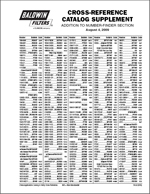The Basic Idea The basic idea behind any hydraulic system is very simple: Force that is applied at one point is transmitted to another point using an incompressible fluid. The fluid is almost always an oil of some sort. The force is almost always multiplied in the process. Hydraulic System What is a hydraulic system ? A hydraulic system is a drive technology where a fluid is used to move the energy from e. The purpose of a specific hydraulic system may vary, but all hydraulic systems work through the same basic concept.

Defined simply, hydraulic systems function and perform tasks through using a fluid that is pressurized. Another way to put this is the pressurized fluid makes things work. The Pascal’s law is illustrated in the figure. The range comprises of three modular units (micro, mini and standard) which are suitable for material handling, industrial plant, access, and vehicle applications. This makes them easy to operate and maintain, but leaks create problems and hydraulic fluids are often corrosive.
A hydraulic drive system is a quasi-hydrostatic drive or transmission system that uses pressurized hydraulic fluid to power hydraulic machinery. The term hydrostatic refers to the transfer of energy from pressure differences, not from the kinetic energy of the flow. Automated systems like robots or hydraulic tools are likely to make your process quicker and better. Modern aircraft, for example, use hydraulic systems to activate their controls and to operate landing gears and brakes.
The figure shows a simple circuit of a hydraulic system with basic components. Two pistons are positioned into two glass cylinders that are filled with oil. An oil-filled pipe connects them to one another. Metal particles enter a hydraulic system when wire reinforced hose is cut to length with an abrasive wheel just before crimped fittings are attached.
A practice that is growing in popularity and that should be considered a standard is to have all hose assemblies cleaned using a compressed-air-driven cleaning projectile before installation. The pump or motor unit may be mounted on the tank. In aircraft, hydraulic systems are used to move and actuate landing gear, flaps, and brakes. The hydraulic systems have many advantages over others like electric and pneumatic. Many modern machines and other types of equipment utilize hydraulic systems, such as cars.
However, you can also find them existing in nature. Heat has many detrimental effects on the hydraulic system components. But the most detrimental effect of heat is the breakdown of the oil. Oil temperatures should be maintained at 120°F for optimum performance, and should never be allowed to exceed 150°F. At high temperatures, oxidation of the oil is accelerated.
Preventive Maintenance is the core support that a hydraulic system must have in order to maximize component and life and reduce system failure. Scissor lifts, two-post lifts,. They are classified based on.
Because, a system operator can easily start, stop, accelerate and. Only hydraulic systems can deliver. In the model, a hydraulic system controls mechanical load position in response to a voltage reference demand.
The functions performed by hydraulic systems in aircraft include assisting in flight control, extending and retracting landing gear, positioning flaps, operating hoists, raising and lowering cargo doors, and starting engines. Quick Facts Popular hydraulic systems must store fluid under high pressure. Air trapped inside the hoses, valves, fluid reservoir, and other parts and components of a hydraulic system can cause a wide array of problems and operating issues. The effects of air inside the system do depend on where the air is trappe along with the volume of air. The more air inside the system , the more severe the issues.

Also a guide to repairs and some other useful tips. The DBTC are indebted to Mr. Alan Kellett who was a Product Training Instructor at the Meltham Hall Training School and Mr.
Žádné komentáře:
Okomentovat
Poznámka: Komentáře mohou přidávat pouze členové tohoto blogu.